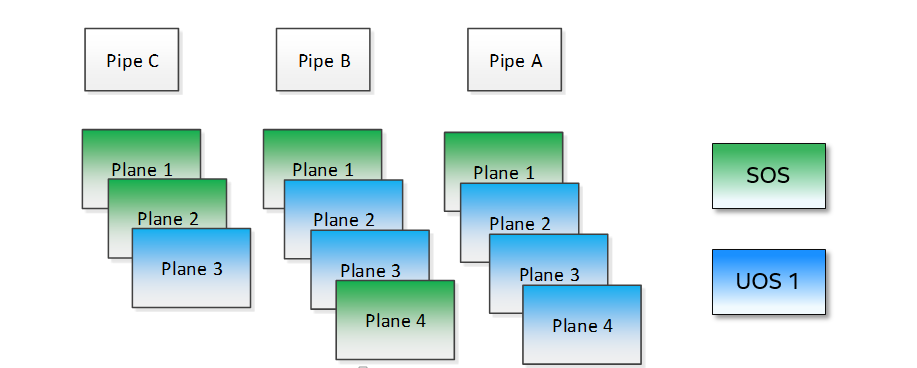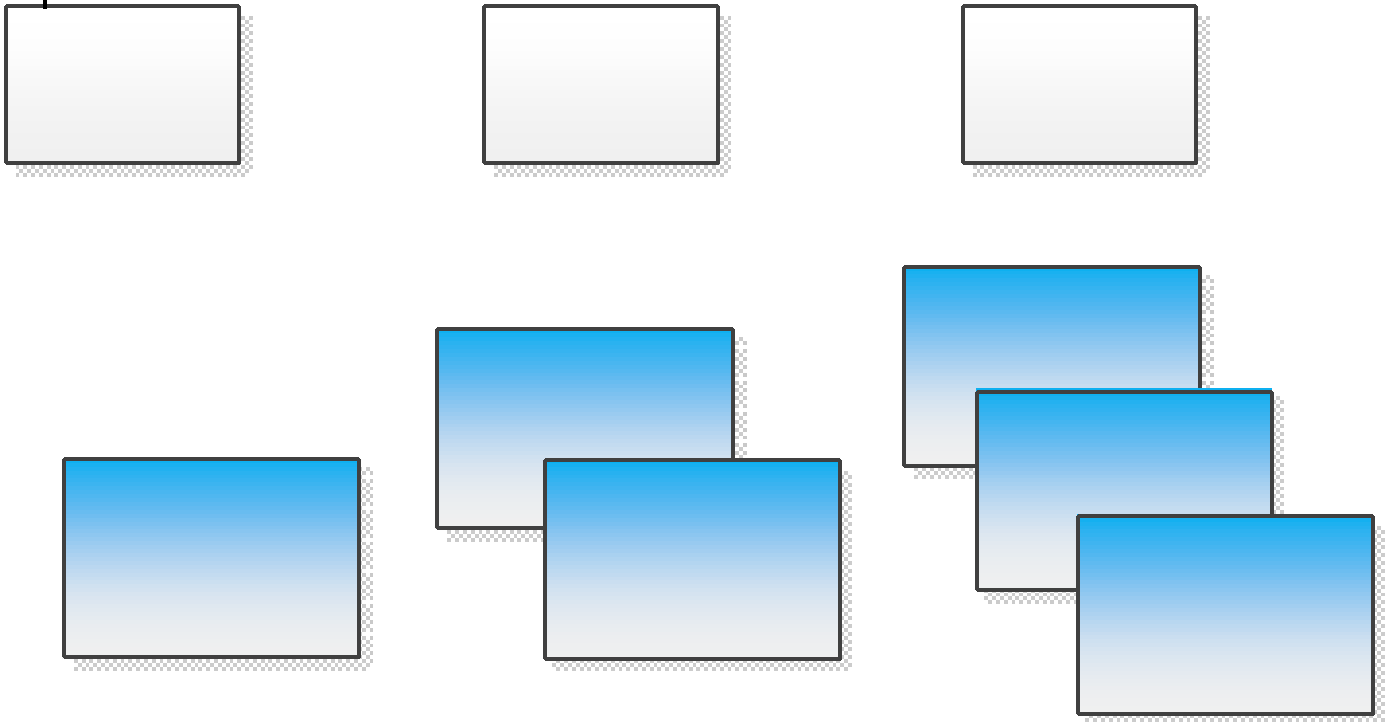ACRN Kernel Parameters¶
Generic kernel parameters¶
A number of kernel parameters control the behavior of ACRN-based systems. Some are applicable to the Service VM kernel, others to the User VM kernel, and some are applicable to both.
This section focuses on generic parameters from the Linux kernel which are relevant for configuring or debugging ACRN-based systems.
| Parameter | Used in Service VM or User VM | Description | Usage example | ||||||||||||||||||
|---|---|---|---|---|---|---|---|---|---|---|---|---|---|---|---|---|---|---|---|---|---|
| module_blacklist | Service VM | A comma-separated list of modules that should not be loaded. Useful to debug or work around issues related to specific modules. | module_blacklist=dwc3_pci
|
||||||||||||||||||
| no_timer_check | Service VM,User VM | Disables the code which tests for broken timer IRQ sources. | no_timer_check
|
||||||||||||||||||
| console | Service VM,User VM | Output console device and options.
|
console=tty0
console=ttyS0
console=hvc0
|
||||||||||||||||||
| loglevel | Service VM | All Kernel messages with a loglevel less than the console loglevel will
be printed to the console. The loglevel can also be changed with
|
loglevel=7
|
||||||||||||||||||
| ignore_loglevel | User VM | Ignoring loglevel setting will print all
kernel messages to the console. Useful for debugging.
We also add it as printk module parameter, so users
could change it dynamically, usually by changing
/sys/module/printk/parameters/ignore_loglevel. |
ignore_loglevel
|
||||||||||||||||||
| log_buf_len | User VM | Sets the size of the printk ring buffer, in bytes. n must be a power of two and greater than the minimal size. The minimal size is defined by LOG_BUF_SHIFT kernel config parameter. There is also CONFIG_LOG_CPU_MAX_BUF_SHIFT config parameter that allows to increase the default size depending on the number of CPUs. See init/Kconfig for more details.” | log_buf_len=16M
|
||||||||||||||||||
| consoleblank | Service VM,User VM | The console blank (screen saver) timeout in seconds. Defaults to 600 (10 minutes). A value of 0 disables the blank timer. | consoleblank=0
|
||||||||||||||||||
| rootwait | Service VM,User VM | Wait (indefinitely) for root device to show up. Useful for devices that are detected asynchronously (e.g. USB and MMC devices). | rootwait
|
||||||||||||||||||
| root | Service VM,User VM | Define the root filesystem
|
root=/dev/mmcblk0p1
root=/dev/vda2
root=PARTUUID=00112233-4455-6677-8899-AABBCCDDEEFF
|
||||||||||||||||||
| rw | Service VM,User VM | Mount root device read-write on boot | rw
|
||||||||||||||||||
| tsc | User VM | Disable clocksource stability checks for TSC. Format: <string>, where the only supported value is:
|
tsc=reliable
|
||||||||||||||||||
| cma | Service VM | Sets the size of the kernel global memory area for
contiguous memory allocations, and optionally the
placement constraint by the physical address range of
memory allocations. A value of 0 disables CMA
altogether. For more information, see
include/linux/dma-contiguous. |
cma=64M@0
|
||||||||||||||||||
| hvlog | Service VM | Sets the guest physical address and size of the dedicated hypervisor
log ring buffer between the hypervisor and Service VM.
A If hypervisor relocation is disabled, verify that
If hypervisor relocation is enabled, reserve the memory below 256MB, since hypervisor could be relocated anywhere between 256MB and 4GB. You should enable ASLR on SOS. This ensures that when guest Linux is relocating kernel image, it will avoid this buffer address. |
hvlog=2M@0xe00000
|
||||||||||||||||||
| memmap | Service VM | Mark specific memory as reserved.
|
memmap=0x400000$0xa00000
|
||||||||||||||||||
| ramoops.mem_address ramoops.mem_size ramoops.console_size | Service VM | Ramoops is an oops/panic logger that writes its logs to RAM before the system crashes. Ramoops uses a predefined memory area to store the dump. See Linux Kernel Ramoops oops/panic logger for details. This buffer should not overlap with hypervisor reserved memory and
guest kernel image. See |
ramoops.mem_address=0xa00000
ramoops.mem_size=0x400000
ramoops.console_size=0x200000
|
||||||||||||||||||
| reboot_panic | Service VM | Reboot in case of panic The comma-delimited parameters are:
|
reboot_panic=p,w
|
||||||||||||||||||
| maxcpus | User VM | Maximum number of processors that an SMP kernel will bring up during bootup.
After bootup, you can bring up additional plugged CPUs by executing
|
maxcpus=1
|
||||||||||||||||||
| nohpet | User VM | Don’t use the HPET timer | nohpet
|
||||||||||||||||||
| intel_iommu | User VM | Intel IOMMU driver (DMAR) option
|
intel_iommu=off
|
Intel GVT-g (AcrnGT) Parameters¶
This table gives an overview of all the Intel GVT-g parameters that are available to tweak the behavior of the graphics sharing (Intel GVT-g, aka AcrnGT) capabilities in ACRN. The GVT-g-kernel-options section below has more details on a few select parameters.
| Parameter | Used in Service VM or User VM | Description | Usage example |
|---|---|---|---|
| i915.enable_gvt | Service VM | Enable Intel GVT-g graphics virtualization support in the host | i915.enable_gvt=1
|
| i915.enable_pvmmio | Service VM, User VM | Control Para-Virtualized MMIO (PVMMIO). It batches sequential MMIO writes into a shared buffer between the Service VM and User VM | i915.enable_pvmmio=0x1F
|
| i915.gvt_workload_priority | Service VM | Define the priority level of User VM graphics workloads | i915.gvt_workload_priority=1
|
| i915.enable_initial_modeset | Service VM | On MRB, value must be 1. On NUC or UP2 boards, value must be
0. See i915.enable_initial_modeset. |
i915.enable_initial_modeset=1
i915.enable_initial_modeset=0
|
| i915.nuclear_pageflip | Service VM,User VM | Force enable atomic functionality on platforms that don’t have full support yet. | i915.nuclear_pageflip=1
|
| i915.avail_planes_per_pipe | Service VM | See i915.avail_planes_per_pipe and i915.domain_plane_owners. | i915.avail_planes_per_pipe=0x01010F
|
| i915.domain_plane_owners | Service VM | See i915.avail_planes_per_pipe and i915.domain_plane_owners. | i915.domain_plane_owners=0x011111110000
|
| i915.domain_scaler_owner | Service VM | See i915.domain_scaler_owner | i915.domain_scaler_owner=0x021100
|
| i915.enable_guc | Service VM | Enable GuC load for HuC load. | i915.enable_guc=0x02
|
| i915.avail_planes_per_pipe | User VM | See i915.avail_planes_per_pipe and i915.domain_plane_owners. | i915.avail_planes_per_pipe=0x070F00
|
| i915.enable_guc | User VM | Disable GuC | i915.enable_guc=0
|
| i915.enable_hangcheck | User VM | Disable check GPU activity for detecting hangs. | i915.enable_hangcheck=0
|
| i915.enable_fbc | User VM | Enable frame buffer compression for power savings | i915.enable_fbc=1
|
GVT-g (AcrnGT) Kernel Options details¶
This section provides additional information and details on the kernel command line options that are related to AcrnGT.
i915.enable_gvt¶
This option enables support for Intel GVT-g graphics virtualization
support in the host. By default, it’s not enabled, so we need to add
i915.enable_gvt=1 in the Service VM kernel command line. This is a Service
OS only parameter, and cannot be enabled in the User VM.
i915.enable_pvmmio¶
We introduce the feature named Para-Virtualized MMIO (PVMMIO) to improve graphics performance of the GVT-g guest. This feature batches sequential MMIO writes into a shared buffer between the Service VM and User VM, and then submits a para-virtualized command to notify to GVT-g in Service VM. This effectively reduces the trap numbers of MMIO operations and improves overall graphics performance.
The i915.enable_pvmmio option controls
the optimization levels of the PVMMIO feature: each bit represents a
sub-feature of the optimization. By default, all
sub-features of PVMMIO are enabled. They can also be selectively
enabled or disabled..
The PVMMIO optimization levels are:
- PVMMIO_ELSP_SUBMIT = 0x1 - Batch submission of the guest graphics workloads
- PVMMIO_PLANE_UPDATE = 0x2 - Batch plane register update operations
- PVMMIO_PLANE_WM_UPDATE = 0x4 - Batch watermark registers update operations
- PVMMIO_MASTER_IRQ = 0x8 - Batch IRQ related registers
- PVMMIO_PPGTT_UPDATE = 0x10 - Use PVMMIO method to update the PPGTT table of guest.
Note
This parameter works in both the Service VM and User VM, but changes to one will affect the other. For example, if either Service VM or User VM disables the PVMMIO_PPGTT_UPDATE feature, this optimization will be disabled for both.
i915.gvt_workload_priority¶
AcrnGT supports Prioritized Rendering as described in the Prioritized Rendering and Preemption high-level design. This configuration option controls the priority level of GVT-g guests. Priority levels range from -1023 to 1023.
The default priority is zero, the same priority as the Service VM. If the level is less than zero, the guest’s priority will be lower than the Service VM, so graphics preemption will work and the prioritized rendering feature will be enabled. If the level is greater than zero, User VM graphics workloads will preempt most of the Service VM graphics workloads, except for display updating related workloads that use a default highest priority (1023).
Currently, all User VMs share the same priority. This is a Service VM only parameters, and does not work in the User VM.
i915.enable_initial_modeset¶
At time, kernel graphics must be initialized with a valid display configuration with full display pipeline programming in place before the user space is initialized and without a fbdev & fb console.
When i915.enable_initial_modeset=1, the FBDEV of i915 will not be
initialized, so users would not be able to see the fb console on screen.
If there is no graphics UI running by default, users will see black
screens displayed.
When i915.enable_initial_modeset=0 in Service VM, the plane restriction
(also known as plane-based domain ownership) feature will be disabled.
(See the next section and Plane-Based Domain Ownership in the ACRN GVT-g
High Level Design for more information about this feature.)
In the current configuration, we will set
i915.enable_initial_modeset=1 in Service VM and
i915.enable_initial_modeset=0 in User VM.
This parameter is not used on UEFI platforms.
i915.avail_planes_per_pipe and i915.domain_plane_owners¶
Both Service VM and User VM are provided a set of HW planes where they
can display their contents. Since each domain provides its content,
there is no need for any extra composition to be done through Service VM.
i915.avail_planes_per_pipe and i915.domain_plane_owners work
together to provide the plane restriction (or plan-based domain
ownership) feature.
i915.domain_plane_owners
On Intel’s display hardware, each pipeline contains several planes, which are blended together by their Z-order and rendered to the display monitors. In AcrnGT, we can control each planes’ ownership so that the domains can display contents on the planes they own.
The
i915.domain_plane_ownersparameter controls the ownership of all the planes in the system, as shown in Figure 28. Each 4-bit nibble identifies the domain id owner for that plane and a group of 4 nibbles represents a pipe. This is a Service VM only configuration and cannot be modified at runtime. Domain ID 0x0 is for the Service VM, the User VM use domain IDs from 0x1 to 0xF.For example, if we set
i915.domain_plane_owners=0x010001101110, the plane ownership will be as shown in Figure 29 - Service VM (green) owns plane 1A, 1B, 4B, 1C, and 2C, and User VM #1 owns plane 2A, 3A, 4A, 2B, 3B and 3C.Some other examples:
- i915.domain_plane_owners=0x022211110000 - Service VM (0x0) owns planes on pipe A; User VM #1 (0x1) owns all planes on pipe B; and User VM #2 (0x2) owns all planes on pipe C (since, in the representation in Figure 28 above, there are only 3 planes attached to pipe C).
- i915.domain_plane_owners=0x000001110000 - Service VM owns all planes on pipe A and pipe C; User VM #1 owns plane 1, 2 and 3 on pipe B. Plane 4 on pipe B is owned by the Service VM so that if it wants to display notice message, it can display on top of the User VM.
i915.avail_planes_per_pipe
Option
i915.avail_planes_per_pipeis a bitmask (shown in Figure 30) that tells the i915 driver which planes are available and can be exposed to the compositor. This is a parameter that must to be set in each domain. Ifi915.avail_planes_per_pipe=0, the plane restriction feature is disabled.For example, if we set
i915.avail_planes_per_pipe=0x030901in Service VM andi915.avail_planes_per_pipe=0x04060Ein User VM, the planes will be as shown in Figure 31 and Figure 31:i915.avail_planes_per_pipecontrols the view of planes from i915 drivers inside of every domain, andi915.domain_plane_ownersis the global arbiter controlling which domain can present its content onto the real hardware. Generally, they are aligned. For example, we can seti915.domain_plane_owners= 0x011111110000,i915.avail_planes_per_pipe=0x00000Fin Service VM, andi915.avail_planes_per_pipe=0x070F00in domain 1, so every domain will only flip on the planes they owns.However, we don’t force alignment:
avail_planes_per_pipemight not be aligned with the setting ofdomain_plane_owners. Consider this example:i915.domain_plane_owners=0x011111110000,i915.avail_planes_per_pipe=0x01010Fin Service VM andi915.avail_planes_per_pipe=0x070F00in domain 1. With this configuration, Service VM will be able to render on plane 1B and plane 1C, however, the content of plane 1B and plane 1C will not be flipped onto the real hardware.
i915.domain_scaler_owner¶
On each Intel GPU display pipeline, there are several plane scalers to zoom in/out the planes. For example, if a 720p video is played full-screen on a 1080p display monitor, the kernel driver will use a scaler to zoom in the video plane to a 1080p image and present it onto a display pipeline. (Refer to “Intel Open Source Graphics PRM Vol 7: display” for the details.)
On Broxton platforms, Pipe A and Pipe B each
have two plane scalers, and Pipe C has one plane scaler. To support the
plane scaling in AcrnGT guest OS, we introduced the parameter
i915.domain_scaler_owner, to assign a specific scaler to the target
guest OS.
As with the parameter i915.domain_plane_owners, each nibble of
i915.domain_scaler_owner represents the domain id that owns the scaler;
every nibble (4 bits) represents a scaler and every group of 2 nibbles
represents a pipe. This is a Service VM only configuration and cannot be
modified at runtime. Domain ID 0x0 is for the Service VM, the User VM
use domain IDs from 0x1 to 0xF.
For example, if we set i915.domain_scaler_owner=0x021100, the Service VM
owns scaler 1A, 2A; User VM #1 owns scaler 1B, 2B; and User VM #2 owns scaler
1C.
i915.enable_hangcheck¶
This parameter enable detection of a GPU hang. When enabled, the i915 will start a timer to check if the workload is completed in a specific time. If not, i915 will treat it as a GPU hang and trigger a GPU reset.
In AcrnGT, the workload in Service VM and User VM can be set to different
priorities. If Service VM is assigned a higher priority than the User VM, the User VM’s
workload might not be able to run on the HW on time. This may lead to
the guest i915 triggering a hangcheck and lead to a guest GPU reset.
This reset is unnecessary so we use i915.enable_hangcheck=0 to
disable this timeout check and prevent guest from triggering unnecessary
GPU resets.




